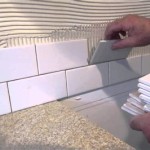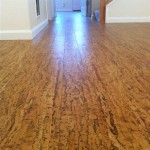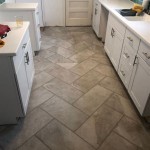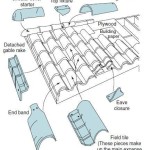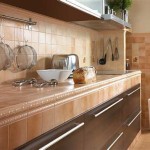7 Creative Ideas For Reusing Old Tile In Your Bathroom Floor
Repurposing materials is a sustainable practice that benefits both the environment and your wallet. Instead of discarding old tiles after a bathroom renovation, consider the multitude of ways they can be creatively reused, particularly within the bathroom floor itself. This article presents seven distinct ideas for breathing new life into old tiles and incorporating them into your bathroom floor design.
1. Mosaic Tile Floor Inlay
One effective way to reuse old tiles is by creating a mosaic tile floor inlay. This involves strategically incorporating smaller, broken, or patterned tiles into the existing floor. This option is particularly suitable when only a limited number of tiles are available or when dealing with tiles that have minor imperfections. Before starting, meticulously plan the design. Consider geometric patterns, floral motifs, or abstract arrangements. The scale of the inlay should complement the overall size of the bathroom. For smaller bathrooms, a smaller inlay might be more suitable, while larger bathrooms can accommodate more expansive designs. Prior to installation, clean the old tiles thoroughly and break them into appropriately sized pieces using a tile nipper or wet saw. Apply a thin-set mortar to the existing floor surface to adhere the mosaic pieces. Ensure proper spacing between the tiles to allow for grout lines. Once the mortar has cured, apply grout, clean off the excess, and seal the grout lines to protect against moisture penetration.
The success of a mosaic tile floor inlay hinges on both artistic design and technical execution. Attention to detail in the tile arrangement and grout application will significantly impact the final aesthetic appeal. Consider using different colors and textures of old tile to create a more visually striking design. The contrast between the inlay and the surrounding floor tiles can add a unique character to the bathroom.
2. Patchwork Tile Floor
A patchwork tile floor involves using a collection of different old tiles to create a visually diverse and textured floor surface. This approach works well with a variety of tile types, including ceramic, porcelain, and stone. The key to a successful patchwork floor is to establish a sense of cohesion despite the varied appearances of the tiles. A common color palette or pattern can help achieve this uniformity. For instance, one might choose a range of blue and green tiles, or arrange tiles in alternating sizes or shapes to form a recurring pattern. Before installation, sort the old tiles by size, color, and texture. Experiment with different layouts to find the most aesthetically pleasing arrangement. Use a thin-set mortar to adhere each tile to the subfloor, ensuring that all tiles are level. Pay close attention to grout lines, and use a matching grout color to tie the different tiles together. The resulting patchwork floor will be a unique and eye-catching feature in the bathroom.
Patchwork tile floors often convey a rustic or eclectic vibe, making them a good complement to bathrooms with similar design themes. Consider offsetting the seemingly randomness of the pattern with a strategically chosen bath mat or other bathroom accessories. Proper sealing of the grout and tiles will be important to maintaining the longevity and appearance of the patchwork floor, particularly in high-moisture environments.
3. Tile Border Accent
If only a limited number of old tiles are available, consider using them to create a decorative tile border accent around the perimeter of the bathroom floor. This involves installing a strip of old tiles along the walls, framing the main floor area. The border can be a simple single row of tiles, or a more elaborate design consisting of multiple rows of alternating colors or patterns. A tile border accent can add visual interest to an otherwise plain bathroom floor. The choice of tile for the border should complement the existing floor tiles and the overall bathroom décor. For example, if the main floor is a neutral color, a border of brightly colored or intricately patterned tiles can provide a striking contrast. Before installing the border, carefully measure and mark the desired width around the perimeter of the room. Apply a thin-set mortar to the subfloor and install the tile border, ensuring that the tiles are level and properly aligned. Grout the tiles and seal the grout lines to prevent water damage.
The tile border accent can also serve a practical purpose by concealing any uneven edges between the floor and the walls. This is especially useful in older bathrooms where the walls may not be perfectly square. The border also provides a visual break, defining the space and adding a touch of elegance. The success of a tile border accent lies in its ability to enhance the overall design of the bathroom without overwhelming the space.
4. Geometric Tile Insertions
Geometric tile insertions involve strategically incorporating geometric shapes made from old tiles into the existing bathroom floor. Triangles, squares, rectangles, or even more complex geometric patterns can be created using the old tile and embedded into the floor to create visual interest. This technique works well with both solid-colored and patterned tiles. The key is to create a cohesive design that complements the overall aesthetic of the bathroom. Begin by planning the geometric pattern you wish to create. Consider the size, shape, and placement of the insertions. Before cutting the tiles, precisely measure the existing floor space and mark where the geometric shapes will be located. Use a tile saw to cut the old tiles into the desired shapes. Apply a thin-set mortar to the subfloor and carefully install the geometric insertions, ensuring that they are level and that the grout lines are consistent. Once the mortar has cured, grout the tiles and seal the grout lines to protect against moisture. The geometric tile insertions can add a modern and sophisticated touch to the bathroom floor.
The spacing between the geometric tile insertions should be carefully considered. Too much spacing can make the design appear disjointed, while too little spacing can make the insertions feel cluttered. The color and texture of the grout can also play a significant role in the overall aesthetic of the design. A contrasting grout color can highlight the geometric shapes, while a matching grout color can create a more subtle effect.
5. River Rock and Tile Combination
Combining old tiles with river rock can create a unique and naturalistic bathroom floor. River rock can be sourced from local landscaping suppliers or even collected from natural environments (where permitted). The combination of the smooth texture of the river rock with the hard surface of the tile can create a visually appealing and tactile experience. To create this type of floor, start by preparing the subfloor. Ensure that the subfloor is clean, level, and free of any debris. Plan the arrangement of the tiles and river rock. Consider creating a pattern or simply arranging the materials randomly. Apply a thin-set mortar to the subfloor and begin installing the tiles and river rock. Press each tile and rock firmly into the mortar, ensuring that they are level with each other. Allow the mortar to cure completely before applying grout. Use a grout that is specifically designed for use with river rock, as it will be more flexible and less likely to crack. Apply the grout to all of the gaps between the tiles and river rock. Use a sponge to clean off any excess grout. Seal the grout to protect it from moisture. The river rock and tile combination floor will give the bathroom a spa-like feel.
Selecting the right size and shape of river rock is important for creating a comfortable and aesthetically pleasing floor. Smaller, flatter rocks are generally more comfortable to walk on than larger, more rounded rocks. The color and texture of the river rock should also complement the color and texture of the tiles. Consider adding a sealant to the river rock to protect it from staining and to enhance its natural color.
6. Incorporating Tile as Accent Strips
Old tiles can be repurposed as accent strips within a larger expanse of new or existing flooring. This technique allows for the reuse of even a small quantity of old tiles. The accent strip can run the length of the bathroom, creating a visual pathway, or it can be used to highlight specific areas, such as around the sink or shower. Select tiles that offer a visual contrast to the main flooring material. This contrast can be achieved through color, texture, or pattern. Before installation, carefully measure and mark the location of the accent strip. Apply a thin-set mortar to the subfloor and install the tiles, ensuring that they are level with the surrounding flooring. Use spacers to maintain consistent grout lines. Once the mortar has cured, apply grout and clean off the excess. Seal the grout lines to protect against moisture. The accent strip can add a touch of personality and style to the bathroom floor.
The width of the accent strip should be proportionate to the size of the bathroom. A wider strip can make a small bathroom feel smaller, while a narrow strip may be lost in a larger bathroom. Choose a grout color that complements both the old tiles and the main flooring material. Regularly cleaning and sealing the grout lines will help to maintain the appearance of the accent strip.
7. Tile "Rug" Design
Create a tile "rug" design by using the old tiles to define a specific area of the bathroom floor, mimicking the appearance of a traditional rug. This can be particularly effective in larger bathrooms where you want to visually delineate different zones. Choose a design that complements the overall style of the bathroom. Geometric patterns, floral motifs, or abstract designs can all be used to create a tile "rug." Carefully measure and mark the area where the tile "rug" will be installed. Consider adding a border around the design to further define the space. Apply a thin-set mortar to the subfloor and install the tiles, ensuring that they are level with the surrounding flooring. Use spacers to maintain consistent grout lines. Once the mortar has cured, apply grout and clean off the excess. Seal the grout lines to protect against moisture. A tile "rug" can add warmth, character, and visual interest to the bathroom floor.
The size and shape of the tile "rug" should be proportional to the size of the bathroom and the function of the area it defines. For example, a small, rectangular tile "rug" can be placed in front of the sink, while a larger, more elaborate design can be used to define the shower area. When selecting the tiles for the "rug," consider the colors, textures, and patterns that will best complement the existing bathroom décor. Properly sealing the grout lines will be important to prevent staining and water damage.

10 Ways To Recycle Old Tiles

Stencil And Save Upcycling Old Bathroom Tiles With Stencils Diy Idea

8 Creative Ways To Use Leftover Tile For Diy Decor

Vintage Bathroom Makeover With A Special Tile Touch

Bathroom Floor Tiles Design Ideas For Every Style And Budget In 2024

Rebooting The Bathroom New York Times

Tile Design Ideas For A Fresh Take On An Ancient Tradition

Update Your Style With These Cool Bathroom Tile Ideas Arizona

9 Best Tile Options For Your Bathroom Floor

82 Best Bathroom Decor Ideas For A Remodel With Soul
Related Posts

